1. Solder
With Kriss and Katie.
We held, cut or peeled the wire using different parts of the clamp. After peeling the wire to leave its metal core exposed, we fixed it and the switch onto a clip device, flipped on the soldering machine, set its temperature about just higher than half the dial and pulled up the soldering pen. Teammate fetched solder, which we got to contact the pen near above the connection. Soon the solder liquified, fell on the connection and became part of the connection when it cooled.
2. Build Circuits
With Katie.
1) Door Bell
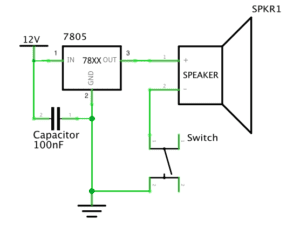

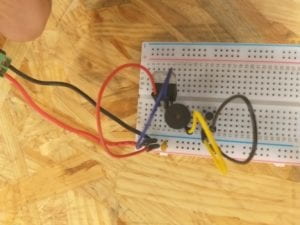
There were issues on what’s to ground. Then we knew that the ground is defined to be 0V, and so is the negative polar. Then we matched connections with the same potentials.
2) Lamp
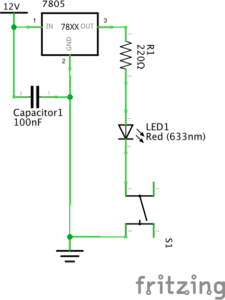
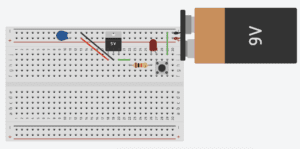
(Please don’t care about the LED polarity in the second picture since Tinkercad can’t flip a component.)

There were issues on the structure of the switch. As is drawn by partner Katie, showing below what’s inside a switch. AD and BC terminals are connected; we tell them by the convex bar at the switch’s bottom. Terminal I shouldn’t be shortened.
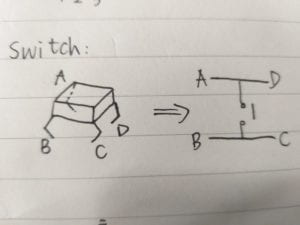
3) Dimmable Lamp
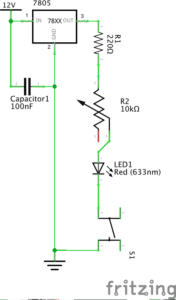
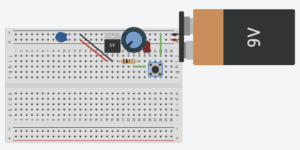
(Please don’t care about the LED polarity in the second picture since Tinkercad can’t flip a component.)
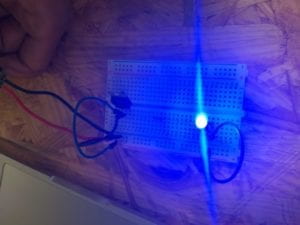
3. Answers to Questions
1) After reading The Art of Interactive Design, in what way do you think that the circuits you built today include interactivity?
Interaction consists of the conversation between the machine and the player. It’ s a circulation of real-time action and reaction. We switch close, and the circuits would scream, gleam or do nothing when built, to have us know if they were OK or wrongly built, by which outcome we decide to correct or accept them. Knobbing the potential meter to change the dimness of LED in the third circuit is also interaction. We knob, LED changes, and we judge how much the light change is proper, and we knob…
2) How can Interaction Design and Physical Computing be used to create Interactive Art?
Interaction design is added to the idea of getting beyond screen and keyboard. By physical computing, sensor inputs and multiple outputs realize the design. We can make interactive art instantly responding. One characteristic of the artwork is that it’s dynamic, it’s lively, and it’s intelligent.